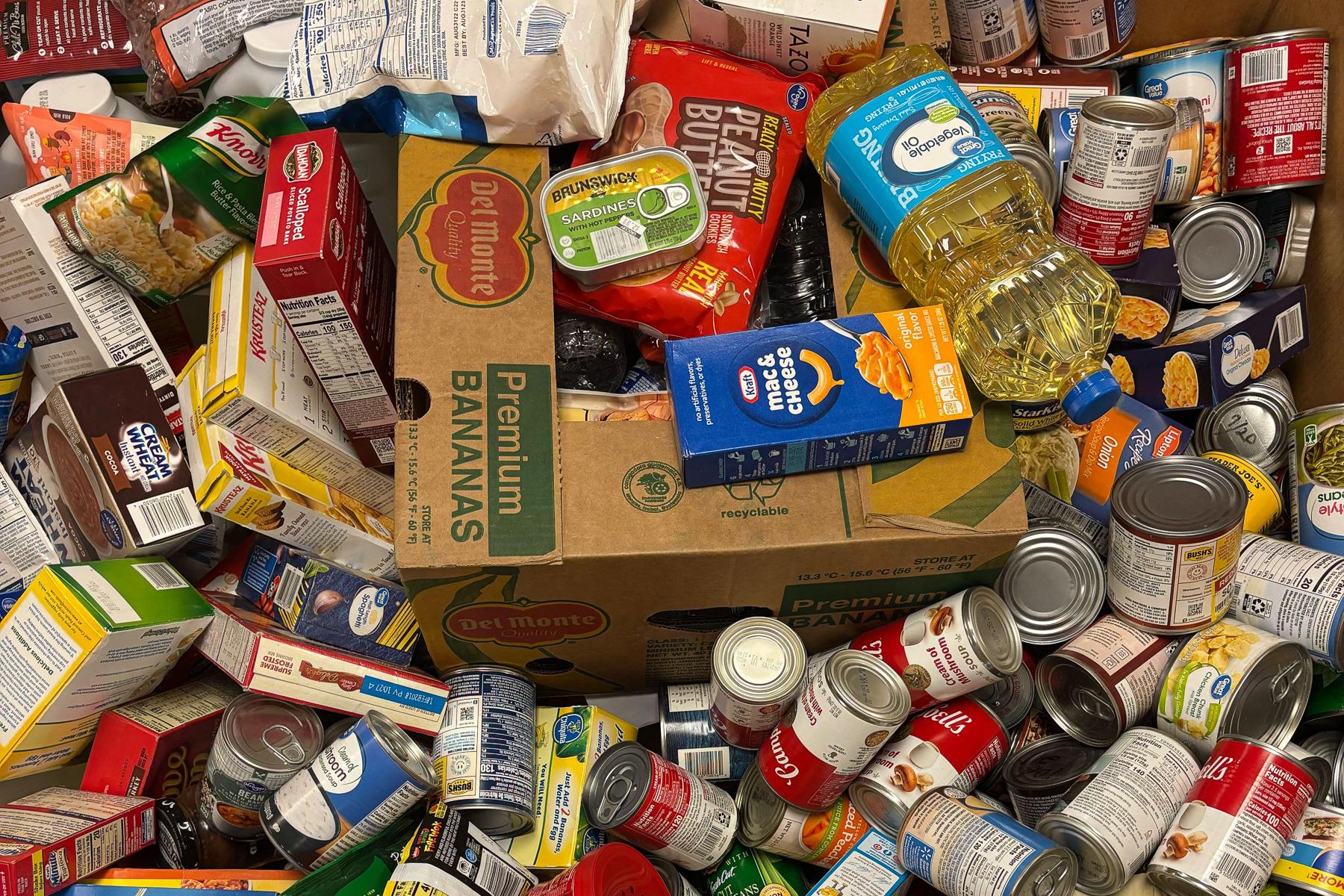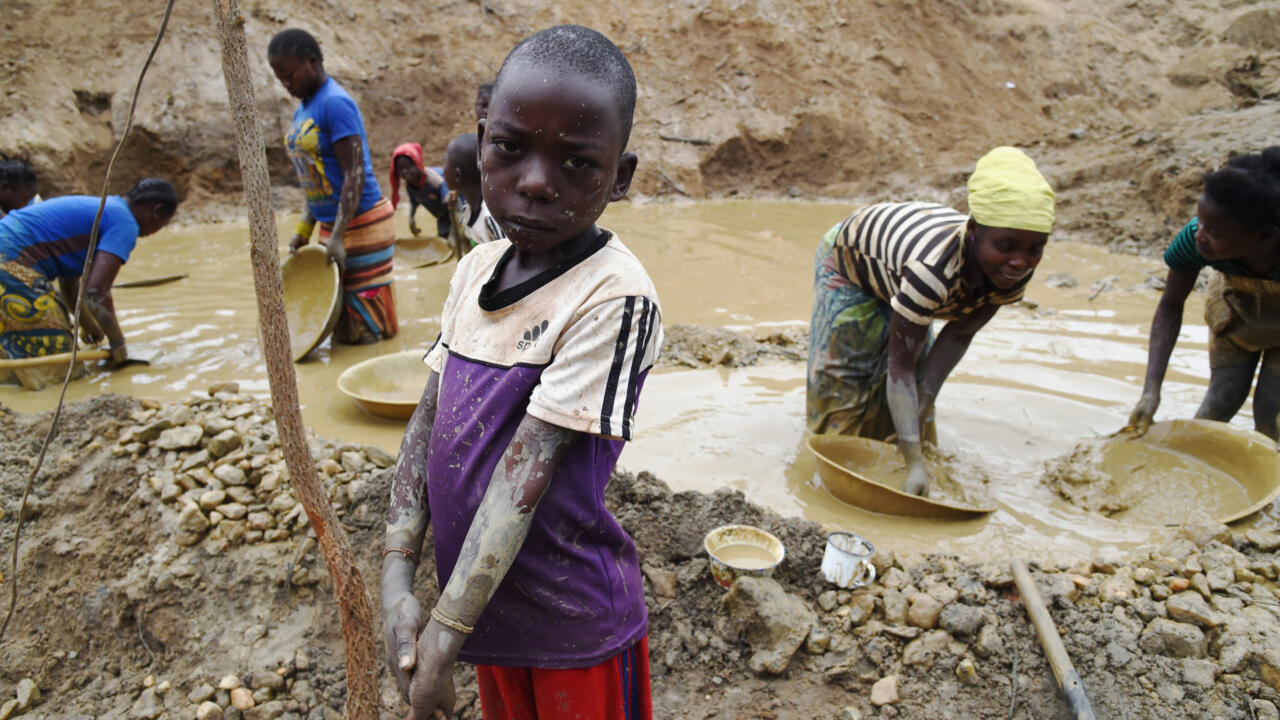Colorado lawmakers approve $10 million to bolster food banks as SNAP benefits dry up – Colorado Public Radio

Report on Colorado’s Emergency Funding in Response to Federal SNAP Suspension
Introduction: Mitigating Food Insecurity and Upholding SDG 2 (Zero Hunger)
In response to a federal government shutdown and the subsequent suspension of the Supplemental Nutrition Assistance Program (SNAP), Colorado’s Joint Budget Committee has authorized an emergency expenditure. This measure directly addresses the imminent threat to food security for 600,000 state residents, a critical challenge to achieving Sustainable Development Goal 2 (Zero Hunger). The state’s intervention aims to provide a temporary safety net for vulnerable populations facing acute food shortages.
State Financial Intervention and Inherent Limitations
The committee unanimously approved a $10 million allocation from state reserves to support food banks and assistance programs. However, this state-level action is significantly constrained when compared to the scale of the federal program it seeks to supplement.
- Funding Disparity: The $10 million state allocation represents a fraction of the $120 million in federal SNAP benefits distributed monthly in Colorado.
- State Capacity: Nonpartisan analysis presented to the committee, articulated by Chief Legislative Budget & Policy Analyst Tom Dermody, characterized the state’s effort as attempting to “plow a field with a fork,” underscoring the vast gap between state resources and the needs of the populace. This highlights the challenge of achieving SDG 1 (No Poverty) and SDG 2 (Zero Hunger) without robust federal institutional support.
- Systemic Constraints: Officials confirmed that the state lacks the financial mechanisms and resources to fully replace the suspended federal funding.
Distribution Strategy: A Partnership for the Goals (SDG 17)
The approved funds are designed to be leveraged for maximum impact through strategic partnerships, aligning with SDG 17 (Partnerships for the Goals). The distribution plan focuses on efficiency and targeting areas of greatest need, which is crucial for addressing SDG 10 (Reduced Inequalities).
- Leveraging Purchases: The $10 million is projected to secure approximately $50 million worth of food, as food banks can purchase goods at a significant discount compared to retail prices.
- Non-Profit Partnership: Funds will be granted to the non-profit organization Feeding Colorado for subsequent distribution to its network of food banks.
- Targeted Aid: Distribution will prioritize regions with a proportionally higher number of SNAP recipients, such as the south and southeast parts of Colorado, in an effort to mitigate regional inequalities in food access.
Legislative Concerns and the Pursuit of Justice (SDG 16)
Despite unanimous approval, committee members raised significant concerns regarding the scope and equity of the emergency plan. These debates reflect the complexities of governance and the pursuit of strong, accountable institutions as outlined in SDG 16 (Peace, Justice and Strong Institutions).
- Incomplete Coverage: Republican members, including Sen. Barbara Kirkmeyer and Rep. Rick Taggart, expressed frustration that the funding would not provide a comprehensive statewide solution, leaving gaps in food security.
- Funding Source Debate: A point of contention arose over using state reserves versus the state’s disaster emergency fund, with Sen. Kirkmeyer arguing the food security crisis constitutes a “man-made” emergency.
- Legal Action: In a broader effort to ensure institutional accountability, Colorado has joined approximately two dozen other states in a lawsuit against the federal administration, demanding the release of a congressionally-approved emergency reserve fund to maintain SNAP benefits.
Broader Implications for Sustainable Development
The suspension of SNAP benefits was described by lawmakers as a “federally induced disaster” with cascading consequences that threaten progress on multiple SDGs. The crisis forces vulnerable households into precarious situations, undermining long-term stability and well-being.
- Threat to Basic Needs: Legislators, including Sen. Judy Amabile, warned that prolonged suspension of benefits will force individuals to choose between essential needs such as food, rent, and utilities, exacerbating poverty (SDG 1) and potentially leading to housing instability.
- Compounding Crises: Democratic Rep. Emily Sirota noted that this food security crisis occurs as the state must also plan for other significant challenges, such as rising healthcare costs, while facing its own budget shortfall.
- Call for Institutional Stability: The situation underscores the critical importance of stable and functioning government institutions for maintaining social safety nets and advancing the overarching goals of sustainable development.
Analysis of Sustainable Development Goals in the Article
1. Which SDGs are addressed or connected to the issues highlighted in the article?
-
SDG 1: No Poverty
The article addresses SDG 1 by focusing on the suspension of the Supplemental Nutrition Assistance Program (SNAP), a key social protection system designed to alleviate poverty. The text highlights how the loss of these benefits creates an emergency for “600,000 people who are not going to have food security,” directly linking the failure of this system to increased vulnerability and hardship for low-income populations.
-
SDG 2: Zero Hunger
This is the most central SDG in the article. The entire discussion revolves around the issue of “food security” and the immediate threat of hunger due to the halt in SNAP benefits. The state’s response, which involves spending “$10 million from the state’s reserves to shore up food banks and food assistance programs,” is a direct effort to combat hunger and ensure people have access to food.
-
SDG 10: Reduced Inequalities
The article touches on SDG 10 by pointing out the disproportionate impact of the crisis on certain regions. It notes that “The south and southeast part of Colorado has proportionally more SNAP recipients,” and the state’s plan is to “send assistance… to those communities.” This targeted approach acknowledges and attempts to mitigate the unequal burden of the food crisis on different populations within the state.
-
SDG 17: Partnerships for the Goals
The article illustrates SDG 17 by describing the collaboration between different sectors to address the crisis. The state government (public sector) is providing “$10 million” in funding, which will be given to “the non-profit Feeding Colorado” (civil society), which will then “distribute the money to food banks with the greatest needs.” This public-civil society partnership is essential to the implementation of the state’s emergency food assistance plan.
2. What specific targets under those SDGs can be identified based on the article’s content?
-
Target 1.3: Implement nationally appropriate social protection systems and measures for all.
The article directly relates to this target by discussing the failure of a major national social protection system, SNAP. The suspension of benefits for “600,000 Coloradans” demonstrates a critical gap in this system’s reliability, and the state’s $10 million stopgap measure is an attempt to temporarily fill this void.
-
Target 2.1: By 2030, end hunger and ensure access by all people, in particular the poor and people in vulnerable situations, to safe, nutritious and sufficient food all year round.
This target is at the core of the article’s subject matter. The state’s emergency funding for food banks is a direct response to the threat that 600,000 people will lose access to sufficient food. The article quotes a lawmaker stating, “This is an emergency in this state, where we have 600,000 people who are not going to have food security,” which explicitly frames the problem in the context of this target.
-
Target 10.3: Ensure equal opportunity and reduce inequalities of outcome.
The state’s plan to distribute aid reflects this target. By acknowledging that “The south and southeast part of Colorado has proportionally more SNAP recipients,” and focusing assistance on “those communities,” the state is actively working to reduce the unequal outcomes of the SNAP suspension, directing resources to where the need is greatest.
-
Target 17.17: Encourage and promote effective public, public-private and civil society partnerships.
The mechanism for distributing the emergency funds is a clear example of this target in action. The article states that the “$10 million” will be given as “grants to the non-profit Feeding Colorado, which will, in turn, distribute the money to food banks.” This demonstrates a public-civil society partnership designed to efficiently deliver aid.
3. Are there any indicators mentioned or implied in the article that can be used to measure progress towards the identified targets?
-
Number of people covered by social protection/food assistance programs.
The article provides a clear indicator by stating that federal SNAP benefits are “distributed to 600,000 Coloradans.” This number serves as a baseline for the population in need of assistance.
-
Value of financial assistance provided.
The article quantifies both the problem and the response. The loss is “$120 million per month the state currently receives in federal SNAP benefits.” The state’s intervention is measured at “$10 million,” which it “estimates… could be leveraged to bring in about $50 million worth of food.” These figures are direct indicators of the financial scale of the social protection gap and the effort to mitigate it.
-
Prevalence of food insecurity.
While not providing a specific percentage, the article repeatedly uses the term “food security” as the key outcome of concern. A lawmaker is quoted saying, “we have 600,000 people who are not going to have food security.” This implies that the prevalence of food insecurity is the primary metric for assessing the severity of the crisis and the success of any intervention.
-
Proportion of population in need by geographic region.
The article implies this indicator by stating, “The south and southeast part of Colorado has proportionally more SNAP recipients in terms of their population than anywhere else in Colorado.” This highlights a way to measure and address regional inequalities in vulnerability.
4. Table of SDGs, Targets, and Indicators
| SDGs | Targets | Indicators |
|---|---|---|
| SDG 1: No Poverty | 1.3: Implement nationally appropriate social protection systems and measures for all. |
|
| SDG 2: Zero Hunger | 2.1: End hunger and ensure access by all people… to safe, nutritious and sufficient food all year round. |
|
| SDG 10: Reduced Inequalities | 10.3: Ensure equal opportunity and reduce inequalities of outcome. |
|
| SDG 17: Partnerships for the Goals | 17.17: Encourage and promote effective public, public-private and civil society partnerships. |
|
Source: cpr.org
What is Your Reaction?
 Like
0
Like
0
 Dislike
0
Dislike
0
 Love
0
Love
0
 Funny
0
Funny
0
 Angry
0
Angry
0
 Sad
0
Sad
0
 Wow
0
Wow
0




















































.jpg.webp?itok=0ZsAnae9#)



























